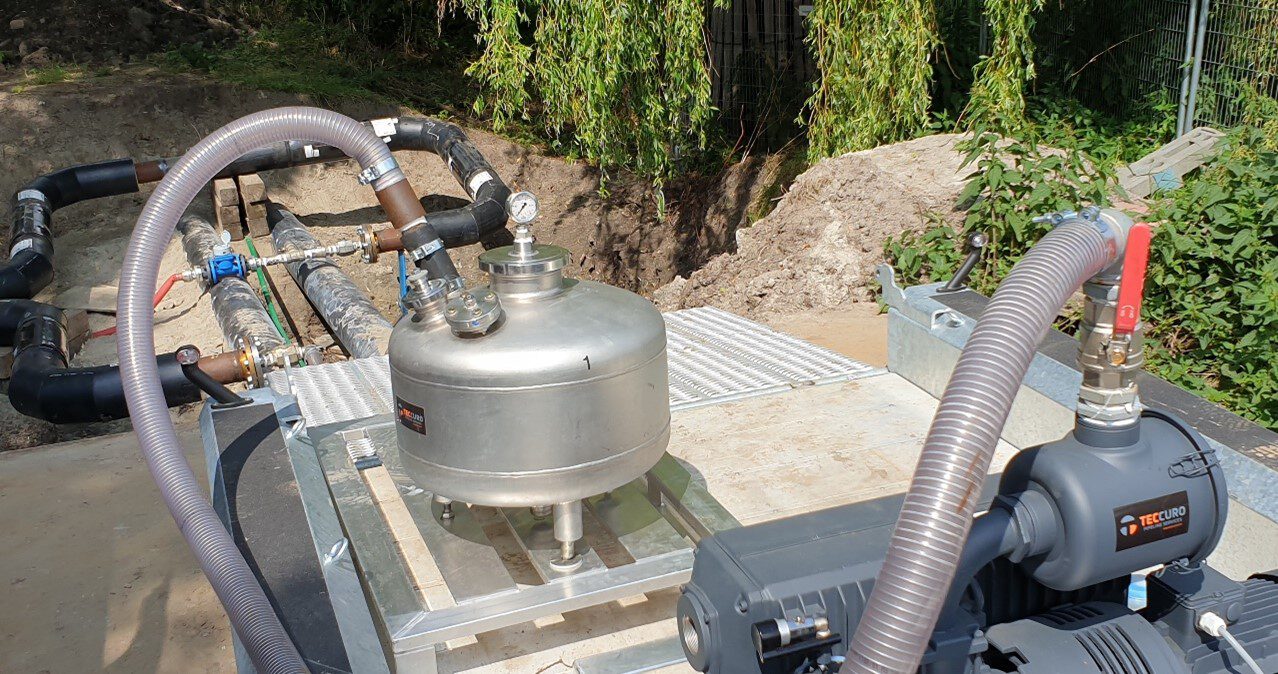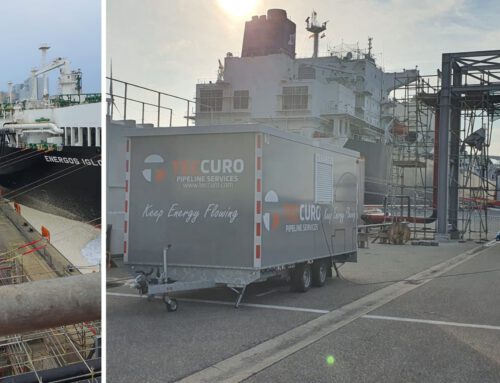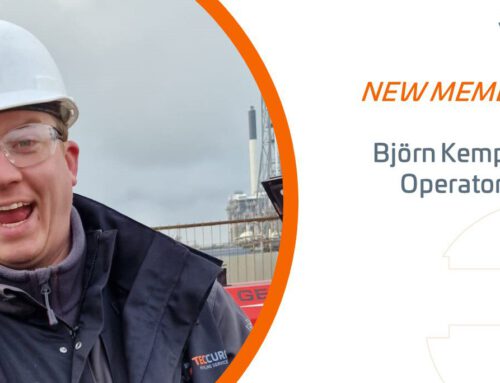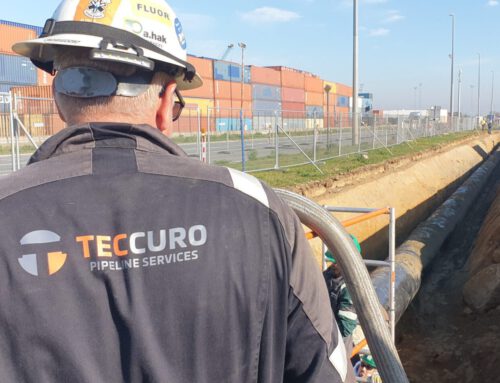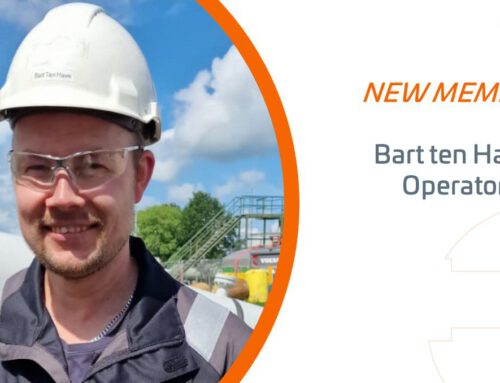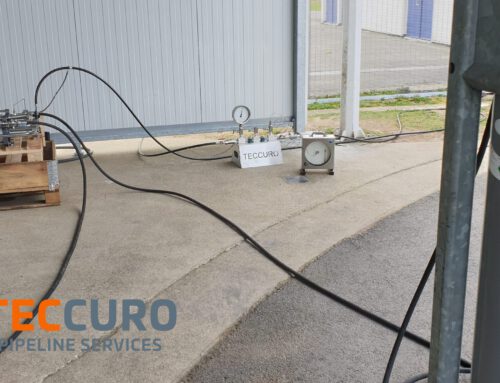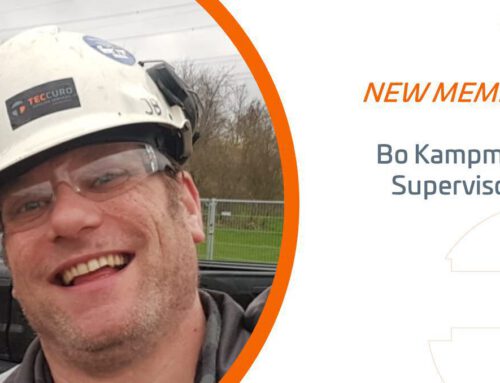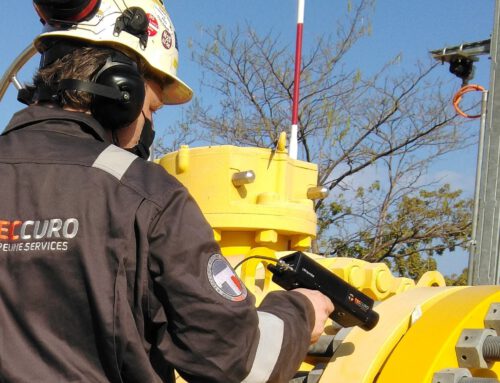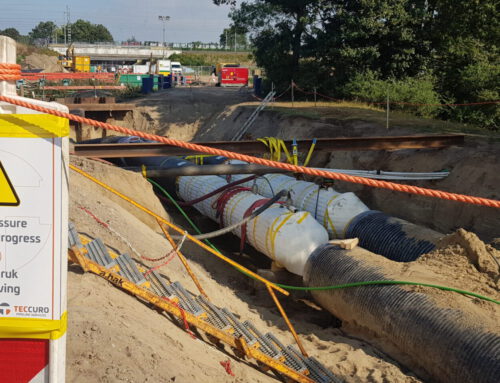The vacuum technique is used by TECCURO during drying, flooding and inerting. After piping and pipeline systems are hydrostatically tested, the pipelines often have to be dewatered and dried afterwards. The use of pigs is a quick and efficient method to dewater your pipes after which the drying can commence. Drying a system to a guaranteed dew point is normally done with dry air or dry gaseous nitrogen, but in some circumstances vacuum drying can be a more efficient option.
Another service where TECCURO is using vacuum is to fill a system with a fluid, normally water. Some pipeline systems are (from a design point of view) difficult to flood because these pipelines are not piggable, have dead ends, numerous offtakes, etc. In these cases filling by vacuum is a perfect solution to flood your pipeline system as air free as possible.
A third option where the vacuum technique is used, is to reduce the oxygen content of a pipeline system. Nitrogen is nowadays, due to the high energy prices, very expensive. To save cost, the oxygen content can be lowered by applying a vacuum which than will be filled by gaseous nitrogen. In this case the demand of large quantities of gaseous nitrogen can be prevented.
Drying by vacuum
Based on the local situation, an expert can assist to make a good judgement in choosing the right technique. The fastest way to remove water from a pipeline is by using pigs. These pigs are normally propelled by (dry) air or gaseous nitrogen. Above ground piping is normally equipped with drain and vent points to remove most of the water. If the free water has been removed, the drying to a dew point can commence.
The dew point is the temperature in which water vapor starts to condense by cooling the air, and without moisture being added or removed. As soon as the air reaches the dew point temperature, the air will be saturated with water vapor. The relative humidity is then 100 percent.
As mentioned before, there are basically three options to dry a pipeline or piping system. If super dry air or nitrogen is used, the system will be over pressured. The dry gas ensures that the water in the pipeline can evaporate and is transported to the discharge point. This process will last until the moisture content in the pipeline is as desired. A saturation period will be used to ensure that the system is dry and has the desired dew point. The opposite technique is using vacuum. In this case the system pressure will be slowly lowered to boiling point of the water. Where water normally boils around 100°C at 1 bara it can also boil at 20°C if the pressure is lowered. Based on the pressure and temperature, that will be monitored constantly by the TECCURO experts, the operation will reach the desired dew point in a controlled way. The advantage of this technique is that through one connection a non piggable leak tight system with valves, appendages can be dried to dew points of <-60°C. Where dead ends in a system are a big problem for drying by air and nitrogen, dead ends are no problem for the vacuum technique.
Inerting by vacuum
To inert a pipeline, a minimum of 3 times the pipeline volume (or more) of gaseous nitrogen is purged to reduce the oxygen content. Nitrogen prices are nowadays high and using the vacuum method is a good alternative and in some cases an cheaper alternative. To reduce the oxygen content the pressure will be lowered to a level that corresponds with the required maximum oxygen level. At that point the pipeline is at that point inerted. Normally the pipeline will be filled with nitrogen to reach an overpressure of at least 0,5 barg. In some cases the system can also be commissioned by filling the pipeline with the on-spec product.
Vacuum filling
If the pipeline has a vacuum it is easy to fill the lines with a gas or fluid. Especially for heating district pipelines where pigging is not possible or for systems with dead ends, the system can be filled with (demineralised) water to ensure there is a minimum amount of trapped air inside. Too much are can damage your equipment but will also influence the hydrotest.
|
Pros |
Cons |
|
Drying / filling of dead ends |
Drying of smaller surface areas takes longer |
|
Minimum one connection |
Not all system can handle under pressure |
|
Deep dew points are possible |
|
|
Inerting your system |
|
|
Cost effective technique |



